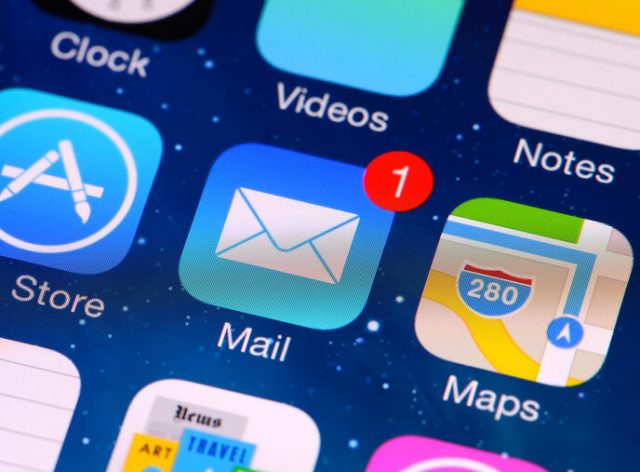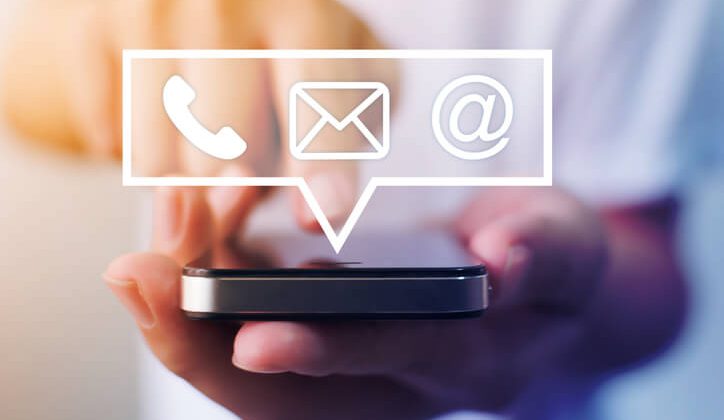Communication is still crucial for a successful business operation, a team-based sport, leading a country of diverse cultures and creating a public opinion. All these aspects are drivers of human evolution. In this aspect, we can’t ignore the impact of businesses on the overall global economy. Let’s dig deep into the debate of email vs text vs call.
Business communications have since been evolving at an alarming rate and for all good reasons.
Today, we can communicate with our global connections pretty easily and instantly. The Internet has been a game-changer for various social and economic sectors, and business communication is among them.
So, this transcendence of business communication has given us options to communicate using a different medium like phone/internet-based calls, texts, and famous emails.
It leads to the question, which communication tool is the best for business communications. In this article, right here, right now, we are going to settle this debate.
So, be informed on the significance of Call vs Text; findings of Text vs Email discussion? Perhaps a dialogue on Call vs Email will clear all the fuss.
Brands need to maintain a close relationship with their customers and stakeholders, and they achieve this by maintaining an active channel of two-way communication.
However, clients, prospects, and stakeholders are constantly receiving massive information, so the need arises to find an effective business communication channel that will deliver the best results.
For best results, it is essential to consider the effectiveness of each communication channel and not only in versatility and scope but also in its overall costs and utility.
Table of Contents
Business Texting
In the era of significant technological developments, and the evolution specifically in Information Communication Technologies (ICTs), many generations are now using smartphones as a vital part of their lives. In particular, we are all now familiar with the Short Messaging Service (SMS).

Today, phones are no longer used to make only phone calls. Younger generation members are overtaking and replacing the older generations as the most dominant groups of the modern workforce.
In this spirit, we must ask ourselves how the upcoming generation choose to communicate in the business setting and will the discussion on Text vs Call finally be decisive.
Business texting is now among brands’ top modes of communication since it encompasses mass audiences in a few minutes.
Is Texting Better Than Email?
SMS vs Email or Text vs Email is no more a discussion. We can use texts for on-the-go quick responses, whereas emails come in use when sending crucial and detailed information that may require specific files as attachments.
Now SMS can’t make long responses. Emails, however, allow business communication to take place with maximum safety and minimum restrictions.
Still, the emails may fall under the SPAM folders; you might want to subscribe with an email hosting platform, which will be costly for this to stop happening. Nonetheless, if you are sending thousands of text messages as a routine business practice, you’ll have to spend money on that too.
So eventually, there is no single answer but what suits a specific company’s communication needs best. For example, a press release should not use a text message to share, and a new product launch will not do much good through an email message.
When Texting is Appropriate
Business Texting is getting more common in business communications than ever before. It’s because a text message is short, to the point, and the communication’s announcement is easily readable. In contrast, its message is easily retainable by the receiver for a long time in their mind.
So, it’s best to send out your new brand promo through Business Texting instead of long emails or invasive phone calls.
Business Texting is more appropriate in sending passcodes for discount claims before or after a transaction is made or when the customer makes an instant online payment. All these alert formats of business communication are best through Business Texting.
When Texting is Inappropriate
A Business Texting mode of communication can be inappropriate at times, for example, when sending confidential information to customers or stakeholders.
It will not be a good decision to share important information through text and cause it to be at risk of exposure to the wrong audience. It can also be inappropriate if a company uses business texting to approach new customers.
Another inappropriate time to send a business text message is when it needs multimedia support like images or links to specific websites. Since the text message has limited character space, your message might lose its effectiveness through incomplete information.
Stats Around Business Texting
- Ninety percent of leads prefer to be texted, compared to called
- Sales prospects who are sent text messages convert 40 percent higher than those who aren’t sent text messages
- Texting in the sales process with a qualified lead can increase conversions by over 100 percent
Pros and Cons of Texting
Pros
- SMS are instant, mobile, inexpensive and accessible
- Smartphone users take a few seconds to send text messages at any time
- You can think about your answers instead of reacting
- It can send mass messaging to disseminate information
- It gives both parties the flexibility to respond on their own time
- The majority of users read SMS
- The most used communication method for people part of older generations
Cons
- Text content is limited to some characters
- Consistent text messages lose their importance in terms of receivers
- Text messages are not safe
- Minimum chance to gain the attention of the readers
- A small window of gaining positive reaction from the receivers
- Unlike email, SMS can come at a fee when sent in bulk or to an international audience
Top 5 Apps for Business Texting

- Text Magic; for getting started quickly with an SMS service
- Simple texting; for simple SMS outreach drives
- Salesmsg; for SMEs using texts as customer outreach
- EZ Texting; for a less tech-savvy audience who need guidance on SMS marketing
- Twilio; for customising your SMS marketing
Business Phone Calls
Phone calls are as old as the phones themselves. For decades, if not more, phone calls have been the centre of long-distance communications. Since the arrival of the Internet and smartphones, phone calls are now much more in demand.

The cost of calls is diminishing as many options are available to choose from while making international calls.
Calling apps like WhatsApp and Talk Home App are now revolutionizing the way we make international phone calls. These apps are almost free to use as they offer such low calling rates, especially the Talk Home App, as it doesn’t even need the Internet to make those cheap phone calls.
Which Is Better Calling or Texting?
Both communication channels are equally helpful; however, some minor differences can make them more suitable than others. That’s because the users will need to purchase mobile phone service facilities for making regular phone calls or buy a mass texting service to achieve instant mass communication.
Rating plans of these services are essential to keep in mind. They base upon communication volume sustainability, the level of support you need while using this channel for managing a business, and whether your business is international or local.
It may also cost to include your company name in the texts or ringtones when someone calls your business. If you want to view gifs or interactive media through a Multimedia Messaging Service (MMS) will cost extra.
Text messages are unlikely to be considered spam-like email, but it has increased over time.
The younger population has grown up with the gradual introduction of instant messaging, texting, email, and other forms of written communications. Due to the way they respond, a text offers the option of thinking before reacting, whereas a call requires reaction in real-time.
A precise, comfortable and fast way of communication is a phone call; however, it means interrupting your routine, while text messages and emails can be read or responded to at any time without interrupting your current efforts.
SMS has peculiarities that distinguish it from other marketing channels; for example, it is effective because the medium is not saturated. It has a high communication efficiency with the customer, and it almost ensures delivery of the message.
Business communication requires phone calls based on the urgency of the matter and the level of communication carried within the conversation.
The broadcast method used by sales reps for a first contact causes significant differences in response rates; however, phone calls may have a different response altogether in supply chains and on-time order deliveries.
Instead of deciding whether to call or not, we can analyze the situation and then go with the best mode of communication.
When Business Phone Calls are Appropriate
- You need an urgent answer
- When you need to change, cancel or confirm an appointment, especially if it is imminent
- If you have tried to address the issue by mail, but there has been no understanding
- If it is the first contact and you need to gather as much attention as possible
- To apologies or if the other person is upset about something
- When it is a sensitive issue, and you prefer not to leave the evidence in writing
- When you have taken too long to respond and want to remedy it soon
When it’s Inappropriate
- At awkward times of the day, like too early in the day or too late in the evening
- The call rates and the cost of contact go up as the day progresses and as the week progresses
- Response rates to voice messages also increase with the advancement of hours and the day
- We don’t know when our calls can be invasive
- The receiver of the call can reject your call, making it an awkward situation
Stats Around Phone Calls in The Workplace
- According to Google’s ‘Click to Call’ research, 59% of customers prefer to call because they want a quick answer, whilst 57% call as they want to talk to a natural person. – Google
- In a PWC survey, 78% of UK participants prefer to interact with a human, significantly as technology improves – PwC
- 52% of consumers say they have made an additional purchase from a company after a positive customer service experience – Zendesk (Source)
Pros
- Phone calls are suitable for a more “humane” dealing with clients and colleagues
- More natural; they are more like the physical world
- Safer. When you talk to someone, you make sure that they receive the message, and you will not be in uncertainty as to whether they may not have read it yet or have deleted it by mistake
Cons
- The average call demands full attention and dedicated time
- The receiver must stop what they are doing to answer the call
- Telephone conversations are spontaneous
- People respond more to text than to phone calls
- Phone calls may not receive an answer
- Phone calls are more expensive than SMS
- You cannot call more than one person or group at a time
Top 5 Apps for Business Phone Calls
- Nextiva; offers auto-attend and various call features
- Talk Home App; among the most economical calling apps that don’t even need the Internet
- Sideline; offers second numbers as a service to segregate personal and business communication
- Unlisted App; uses an actual number and is suitable for a restricted geographical location
- 1-VoIP; internet-based calling service that is very cheap
Business Emails
Since the first emails to companies’ current email marketing practices worldwide, emails as business communication have evolved a lot. Today, the concept of cold emails, welcome emails, subscription emails and newsletter emails are a prevalent and significant form of business communication.

Further, emails are the only form of business communication that can include multimedia files as attachments and easily downloadable resources. Many business email platforms offer exciting features as corporate email services at quite reasonable costs.
Emails are also the most economical form of mass communication that is in use by businesses around the world.
Email vs Text vs Call is one paradox for the business community since all these communication channels have pros and cons. However, effective business communication occurs when the business managers use the right comms channel at the right time and place.
For this reason, firms that are into communications often use multiple channels at once to gain maximum coverage and receive the best results at the same time.
Why Would Someone Send an Email Instead of Calling or Texting?
Email vs Text vs Call is a massive debate, especially in the business communication domain. Still, calls are essential at times, for example, in an urgent delivery by a person to an unknown address. It will be best to call the receiver of the package.
A phone call is imperative if a quick decision needs support and the decision-makers offer to take the go-ahead in real-time. To determine the best mode of communication, one must analyze what your goal for that communication is? Is it to organize a meeting? Get more information? Make a sale?
Thinking about these questions and their importance will help you determine whether to call or text or go for the emails. If it is essential, it requires more commitment to a meeting request, product presentation, etc.
If the objective is not crucial, you can look for indirect information from the buyer, such as a reference call.
Business emails, however, hold a special place in business communications. Emails are legally binding, which trumps its significance over calls and texts. Still, emails offer much more than legal proofing. Emails are the only form of business communication that can include attachments as reference documents for a specific contact.
Especially during the COVID-19 scenario, most of the business communication that needed to be documented proof got a shift towards emails. Before the pandemic, these communications or document proofing often happened manually when all the stakeholders would be present face to face.
So, it’s only natural if someone in your business circle prefers emails over any other form of communication channel.
When Business Emails are Appropriate
- Emails are more appropriate when you need to accompany your message with examples, links or data
- When something is not urgent, and you don’t want to interrupt that person with it
- If you know that your sender uses it frequently and prefers that form of communication
- If the answer can wait a day or more
- If the person you’re trying to contact is a superior command
- If you are communicating with staff who are often not in offices or are travelling, groups so on
- A personal choice depending on factors like age, the nature of work, activity and more
- for internal jobs, it may be more convenient to send emails
- For customer feedback follow-up
When Business Emails are Inappropriate
- If you require an urgent response
- If your message is short and doesn’t require any attachments
- it’s is your first point of contact
- If the situation requires confidentiality and avoidance of any documentary proof
- When you want a group response
- When you’re conducting research or voting
Stats Around Emailing
- The number of active email users is forecasted to reach 4.3 billion in 2023
- 293.6 billion emails were sent and received each day
- The average expected ROI is $42 for every $1 you spend on email marketing (Source)
Pros
- Proof of record, which is good if there is a misunderstanding
- More transparent to convey complicated information such as quotes or proper names
- Can include links, images and attachments that support the story and help it to be understood
- The recipient can read at their convenience; it does not interrupt their routine
- They allow a visual structuring that sometimes helps to understand the message better
Cons
- Not all people use email as a tool with the same diligence
- Until they respond, you cannot be sure that the message has reached its recipient
- Emails that are too long, endless chains that make it difficult to understand the whole message
- Too many people in copy can distort the communication and its effectiveness
- If you use it excessively with the excuse that it is free
- People will get used to not paying attention to your emails if you send them too often
Top 5 Apps for Emails
- Microsoft Outlook; for best business coordination and centralized connectivity
- Gmail; for maximum versatility
- Dispatch; best for High Volume of sending emails
- Proton Mail; for the most secure email communication
- Edison Mail; best for un-subscription emails

Comparison Table – Call vs Email vs Text
| Calls | SMS | ||
| Contact effectiveness | Variable depending on call receiver | Guaranteed delivery | High delivery success but may fall in SPAM |
| Effective communication? | Yes, if the listener attends the call and listens without interruptions | The vast majority of the time, the SMS is read in the notifications before being discarded or opened | Once the email is received, it has high effectiveness |
| Contact problems by classification as SPAM | Call filters are standard; they even come pre-installed on many devices | SPAM filters in SMS are not usual; the spam identification rate in SMS is less than 1% | High SPAM rate if the email SOPs miss-out |
| Payment method | Per minute, sometimes it is charged when entering the mailbox | By successful message | Free or very minimal if subscribed for mass deliveries |
| Two-way communication | Yes, if done manually | Yes, if chosen | Yes, if chosen |
| Spending on Agents / Personnel | ✅ | ❌ | ❌ |
| Spending on telephone infrastructure | ✅ | ❌ | ❌ |
| Dedicated internet spending | ✅ | ❌ | ✅ |
| Spending on infrastructure | ✅ | ❌ | ✅ |
| Expenditure on facilities and furniture | ✅ | ❌ | ❌ |
| Expenditure on Systems (licensing) | ✅ | No, only the successful SMS has charges, no costs per platform | ✅ |
| The time needed to communicate with 200,000 people | Several days or weeks depending on the number of agents | 15 – 30 minutes approx. | 10-30 minutes approx. |
Conclusion
Effective business communication requires multiple channels, and if only one medium is selected, perhaps email will gain more weight than others. However, we can’t say the same if the business is a call centre.
For this reason, a company needs to finalize their best form of communication channel based only on their requirements and not the fashion trends.
However, we need to be equipped with all forms of communication channels to adapt quickly when the time comes.
Remember that you can also combine multiple communication channels.
Calling immediately after sending the mail becomes crucial when the recipient has not had material time to read it. Still, there are other occasions when both remain in use simultaneously.
For example, you can call by phone to introduce the subject and notify you to expand the information by email. Or you can call to ask how the recipient prefers you to explain the issue; perhaps they choose to be contacted over text messages—confirmation of email un-answered for a reasonable time by SMS.
In the end, it is best to use common sense and the resources available for the business. Try to know the preferences of your recipients and, whatever mode you choose, try to be concise: you are onboarding someone with that communication.
Please make it easy for them.

